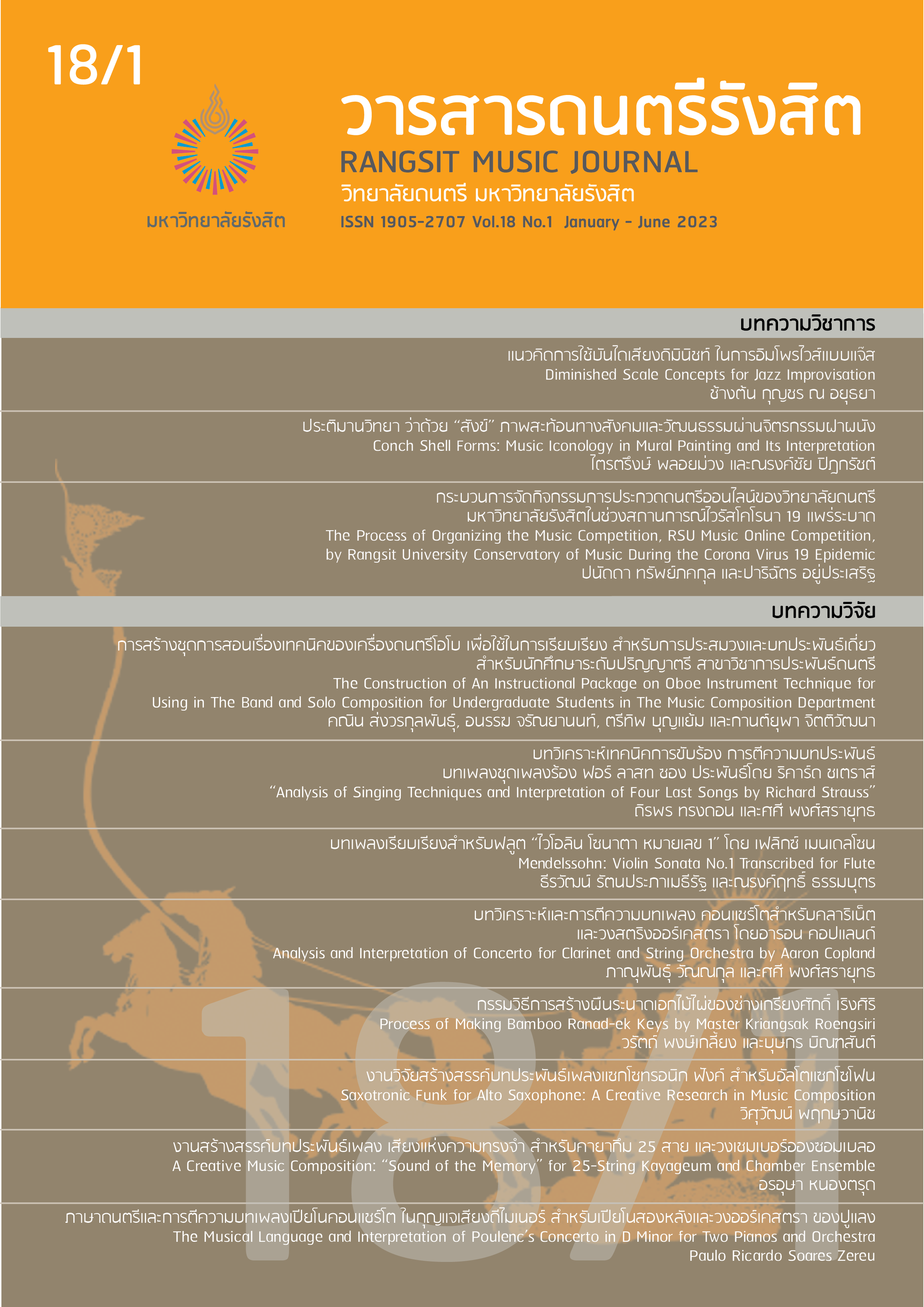Conch Shell Forms: Music Iconology in Mural Painting and Its Interpretation
Keywords:
Iconology, Conch, Shell, Social and Cultural ReflectionAbstract
Murals are related to people's ways of life. Muralists depicted stories, ways of life, societies and cultures through murals reflected the societies and their cultures which is connected to the Iconology, the study of visual imagery and its symbolism as evidence of rituals, beliefs, values and interpretation. Musical Iconography is concerned with the depiction of imaginary music as written language and real music will finally be brought to accompany the depiction after it is recorded. The sound of conch shell fanfare cannot be obtained from the image but it can be perceived through imagination and from old records from the past. In interpreting music murals and paintings, a lot of knowledge are required. It is also necessary to study the traditions, beliefs, values, analysis and interpretation of those images. The study of Music Iconology is the combination of many art genres which a variety of academic qualifications will be shown such as the features of each instrument including its look and sound, and musical ensembles. In addition, music is played in various activities not only for entertainment and recreation but also for birth and death rituals. This ritual music well reflects images of each community.
References
Amatkul, Poonphit, History of Music Development (Interviewee). October 23, 2019.
Arunrat, Udom. Music from Buddhism. Nakhon Pathom: Silpakorn University Printing House, 1987. (in Thai)
Boonyachai, Pramet, Sang (Interviewee). November 1, 2019.
Charoenchinwut, Boontarika. “Sangha, Musical Instruments in Sacred Ritual.” Journal of Fine and Applied Arts Khon Kaen University 8, 2 (2016): 256-292. (in Thai)
Klumklomchit, Taweeroj, Sang (Interviewee). September 21, 2019.
Krairiksh, Piriya. Thaksin Arts before the 19th Century. Bangkok: The Fine Arts Department, 1980. (in Thai)
Lassetter, Leslie. “Music Iconography and Medieval Performance Practice.” The College Music Symposive 31 (1991): 91-116.
Meepom, Dusadee, Sang (Interviewee). November 1, 2019.
Saengaram, Yuttanawarakorn. “Book Review Decoding the King Mongkut's Code.” Fine Arts Journal 5, 1 (2014): 237-256. (in Thai)
Saising, Sakchai. Dvaravati Art: Early Buddhist Culture in Thai Land. Bangkok: Ancient City, 2004. (in Thai)
Sanguanseriwanich, Panida. “The Legend of the Conch Shell which Comes with Auspiciousness.” Accessed July 31, 2021. https://www.silpa-mag.com/history/article_13277. (in Thai)
Sumjinda, Pichaya. Decode King Mongkut. Bangkok: Art and Culture Publishing, 2014. (in Thai)
Tatana, Surathin. “Buddhist History Painting.” Bachelor of Fine Arts Thesis, Silpakorn University, 2006. (in Thai)
Ueaanan, Malichat. Dictionary of Art Terms. Bangkok: Chulalongkorn University Press, 2002. (in Thai)
Downloads
Published
How to Cite
Issue
Section
License
Copyright (c) 2023 Rangsit Music Journal

This work is licensed under a Creative Commons Attribution-NonCommercial-NoDerivatives 4.0 International License.







